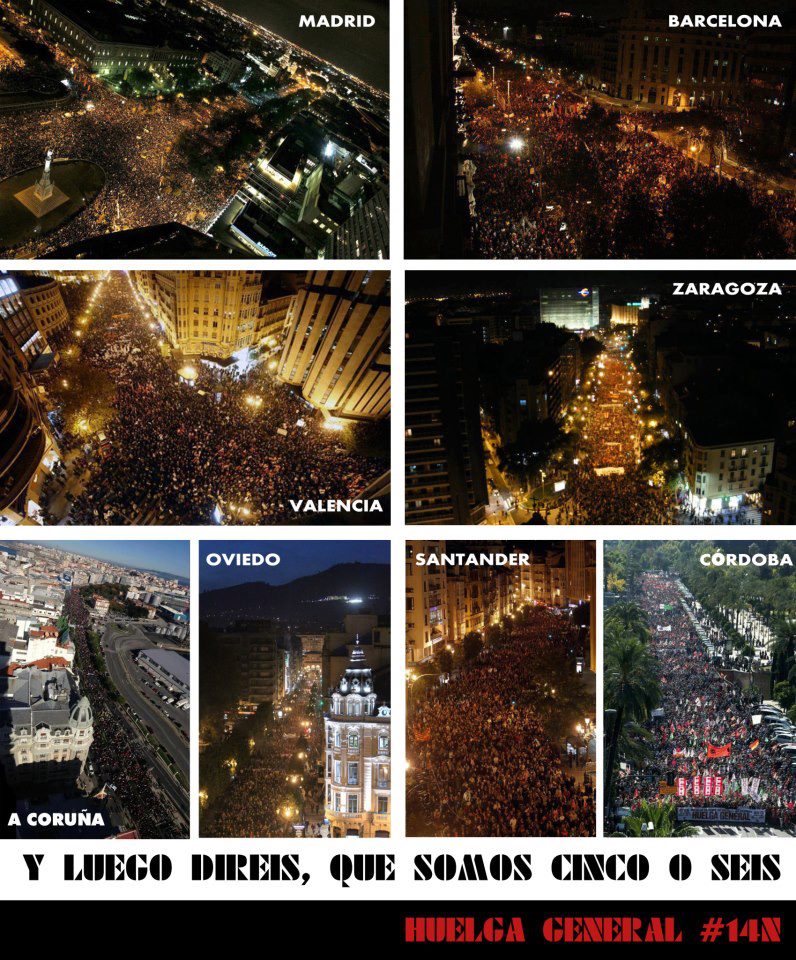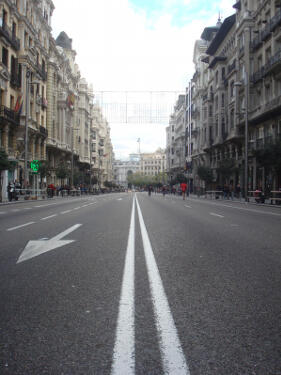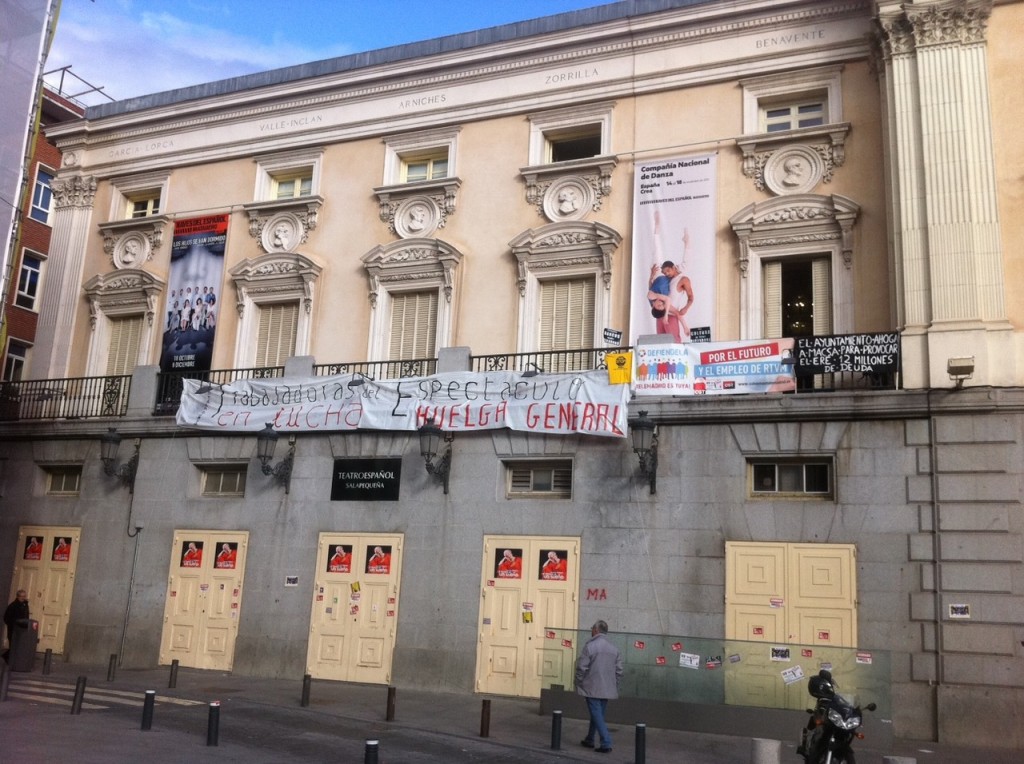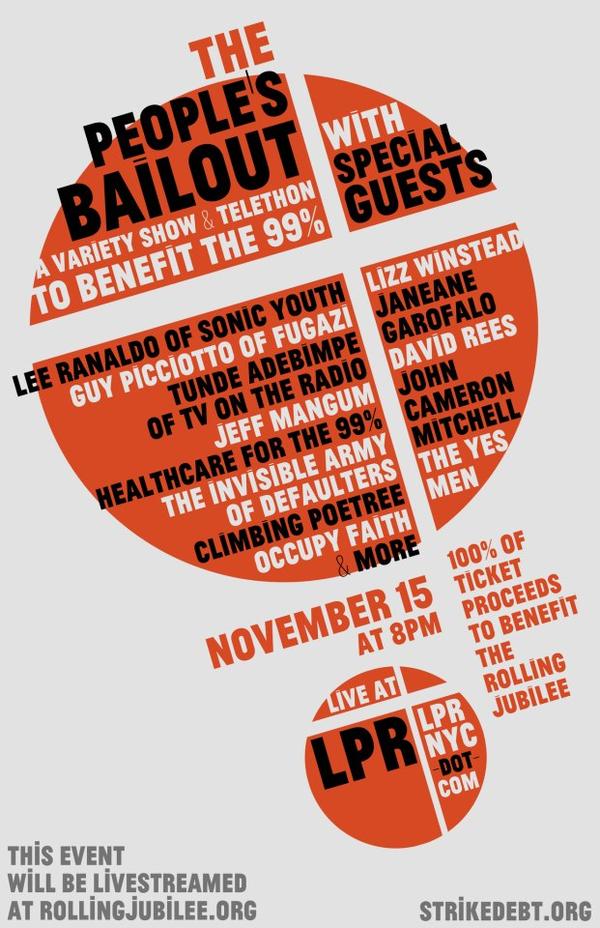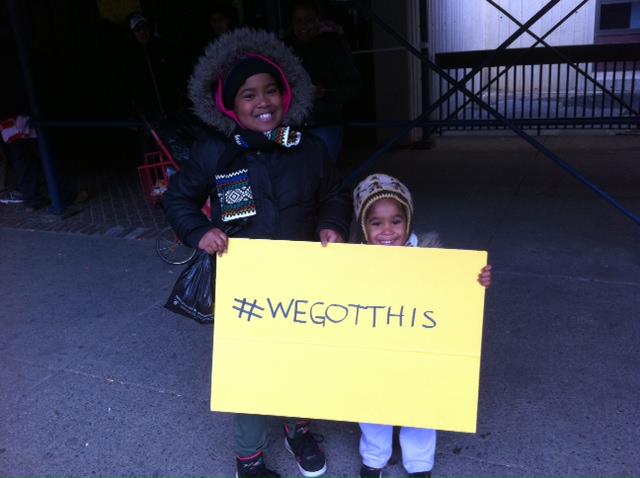
520 Clinton, Brooklyn HQ of Occupy Sandy
There’s a sense of intensity in New York these days. There are rats of astonishing size to be seen in the subway. On my way to Occupy Sandy today, I was part of a platform of horrified travelers at Brooklyn Bridge watching them having sex in the early afternoon. It seems like a portent but the disaster has already happened. It’s time for doing. Doing while thinking.
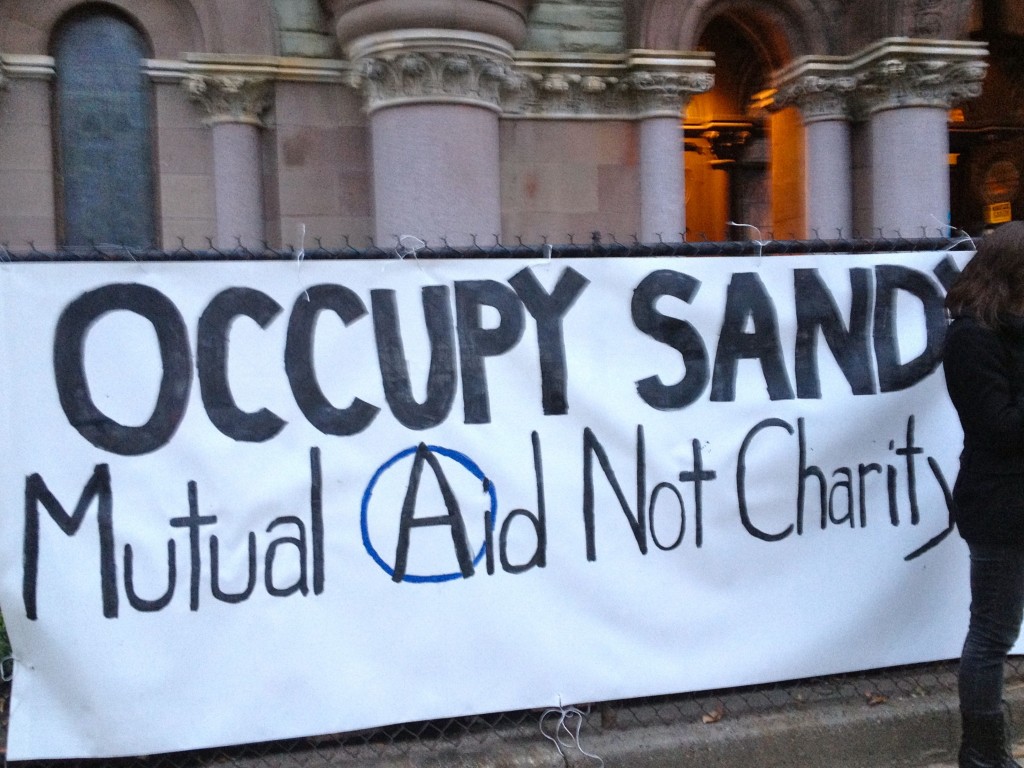
In the course of the week since I first went, Occupy Sandy has developed from a totally improvised project to a rather amazing operation. Stations are clearly identified, from volunteer orientation to driver dispatch, donation collection, packet creation, tech ops, kitchen, sanitation and media. Sound familiar? Yes, it’s the park only indoors. Occupy has reconstituted itself only this time its orientation is entirely outwards.
As it did in Zuccotti, Occupy is getting good press now for the first time in a while. OWS people have been posting this piece from the New York Times on social media and via email:
Occupy Wall Street has managed through its storm-related efforts not only to renew the impromptu passions of Zuccotti, but also to tap into an unfulfilled desire among the residents of the city to assist in the recovery.
There’s no question to my mind that this is right–there’s a palpable desire to do something, anything. Ironically, the mayor’s office, notable by its absence from all the disaster areas, has been seen trying to co-opt Occupy-led relief efforts in Red Hook.
Even while the Times was coming onto the Occupy team, it had to get in a little dig:
After its encampment in Zuccotti Park, which changed the public discourse about economic inequality and introduced the nation to the trope of the 1 percent, the Occupy movement has wandered in a desert of more intellectual, less visible projects, like farming, fighting debt and theorizing on banking.
It’s a false distinction as the Occupy Sandy banner shows–OS thinks of itself as a mutual aid project, which is very much an intellectual as well as practical concept. And it’s an odd list: farming, which has been been the concern of Occupy Farms, isn’t usually thought of as intellectual by contrast with economic inequality. Debt, on the other hand, is precisely about economic inequality.
Yesterday, artist David Rees launched the Rolling Jubilee to the wider world outside OWS via his blog How To Sharpen Pencils. Launched in conjunction with a co-ordinated social media campaign, the concept has gone viral, with features on CNN, Forbes, the Daily Telegraph, Salon, Daily Kos and all over the Internet.
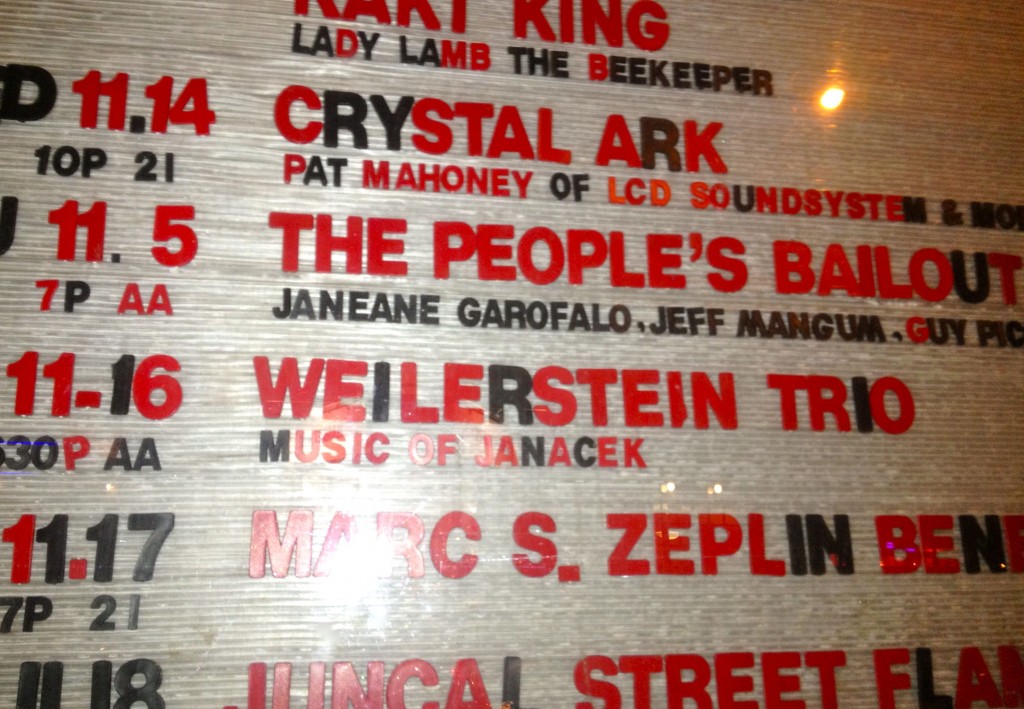
Le Poisson Rouge, Bleecker St
The Jubilee begins with The People’s Bailout, a benefit event at Le Poisson Rouge to raise money in order to abolish debt that is currently in default. As I’ve explained before, the money will be put into the secondary debt market, established by banks and other lenders to sell on defaulted debt. The Rolling Jubilee will buy this debt but rather than attempt to collect on it, it will abolish it. The debt-buying team have tried out their method and it works.
The point is to use mutual aid as a means of questioning the debt system, just as Occupy Sandy uses mutual aid to question social services and disaster relief. The People’s Bailout relieves individuals of their debt burden. It also asks why, if banks can accept 5% of the total debt from debt collectors, individual debtors are expected to pay 100% of what’s owed to a debt collector who had nothing to do with the loan. Further, why should loans that the banks knew to be dubious be repaid? Why should medical emergencies or the desire for an education lead to personal financial disaster, while banks and other speculators walk away from their debts?
The benefit venue sold out within hours of the blog post. Organizers hope to raise $50,000 during the Telethon and if they do, no less than $1 million of people’s debt will be abolished by the people. The People’s Bailout is doing while thinking. So is Occupy Sandy.
Like this:
Like Loading...

